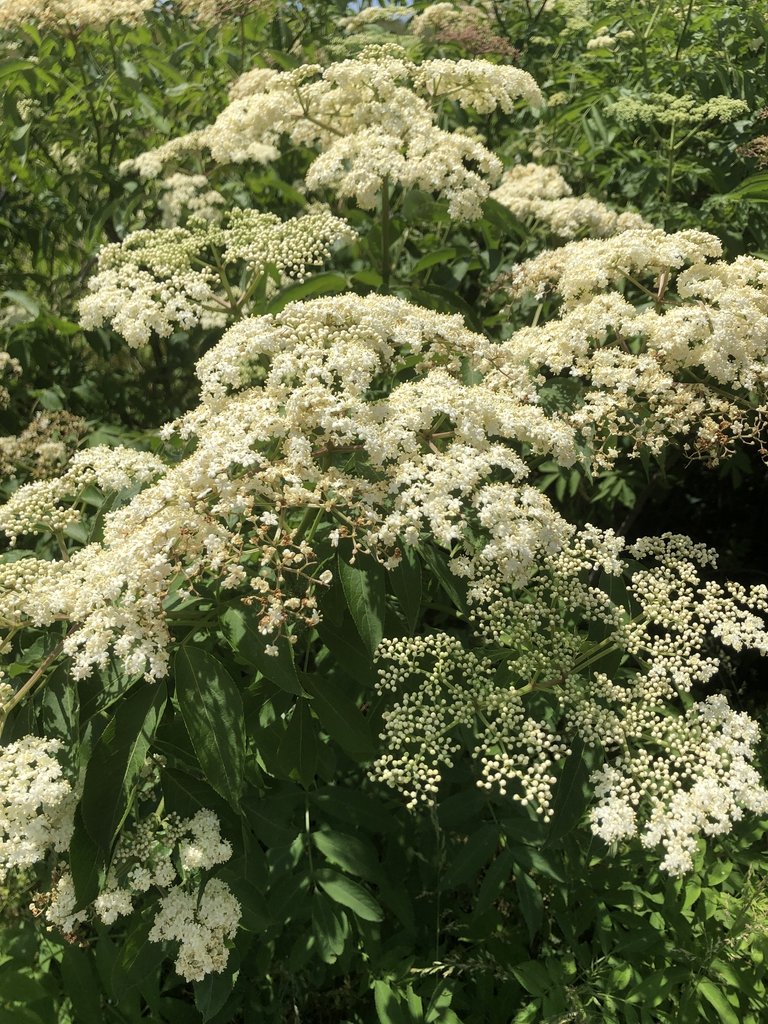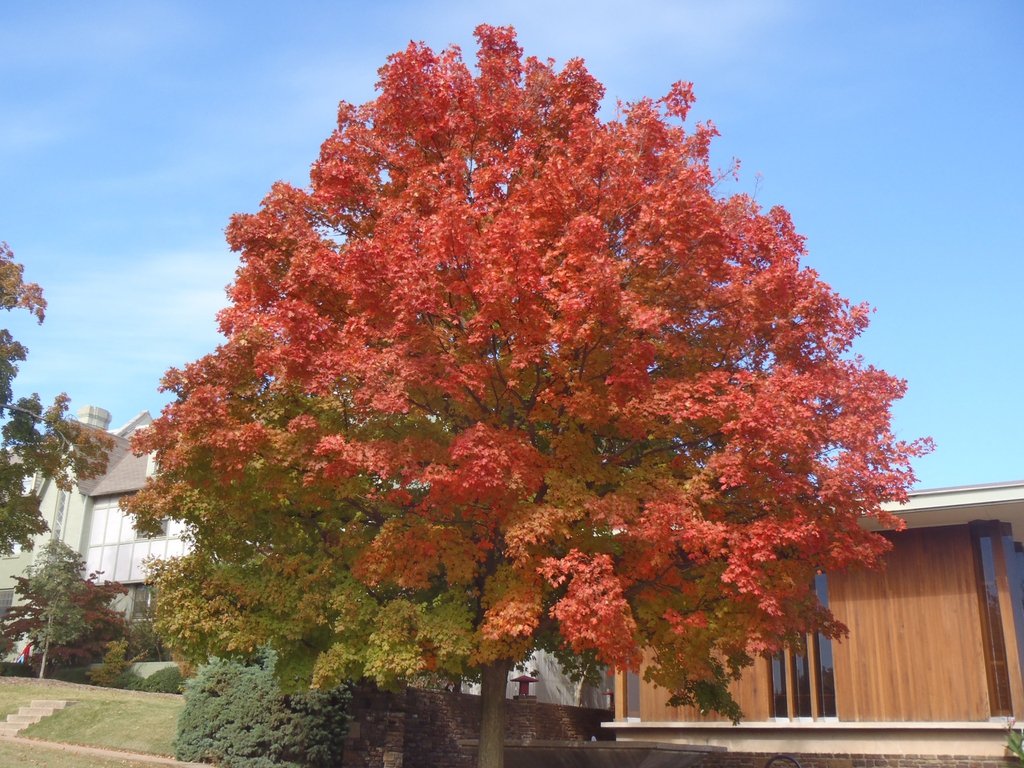Soaring Beauties: Virginia’s Hummingbird-Friendly Trees
Male Ruby-Throated Hummingbird perched on a tree branch.
Welcome back to our ongoing series on native plants that attract hummingbirds! This is part two of a five-part series. This week, we're taking our gaze upwards to the towering elegance of trees. Trees not only provide shade and beauty but can also be crucial in attracting these vibrant visitors to our gardens. I had never thought about trees playing a pivotal role in supporting hummingbirds until I started researching for this series, but it makes sense that they would need trees for nectar and shelter. In Virginia, several native trees are known for their allure to hummingbirds. Today, we'll explore five species: the Tulip Poplar, Common Elderberry, Sugar Maple, Southern and American Crabapples, and finally the Eastern Redbud. All information in this post was verified through the Digital Atlas for Virginia Flora and the NC State Extension Plant Toolbox.
Let’s buzz on in!
1. Liriodendron tulipifera (Tulip Poplar)
The Tulip Poplar, also known as the Tulip Tree, stands out with its distinctive tulip-shaped flowers that burst into bloom in the spring. These greenish-yellow blossoms with a splash of orange provide a rich source of nectar for hummingbirds. Growing majestically tall, Tulip Poplars are not only a visual spectacle but also an excellent source of shelter for wildlife.
Flowers in Spring
Moist, well-drained soil
Height: 80 ft. 0 in. - 120 ft. 0 in. Width: 30 ft. 0 in. - 60 ft. 0 in.
Full sun
2. Sambucus canadensis (Common Elderberry)
Common Elderberry is a versatile and robust tree that offers multiple benefits for hummingbirds. In late spring to early summer, clusters of creamy-white flowers appear, which are rich in nectar and highly attractive to hummingbirds. Beyond its appeal to our feathery friends, the Elderberry’s berries are a vital food source for other wildlife and can be used by gardeners to make jams and jellies. Can someone say, Food Forest?! Elderberry has many medicinal properties. West Virginia University Extension states, “Tea from its flowers encourages sweating and fever reduction. The berries are used as an anti-viral and immune system enhancer. Historically, it has been used as a winter cold reliever. The leaves are used to make poultice for external use as an antiseptic and for bruise healing.”
Flowers Spring/Summer
Moist, well-drained soil
Height: 5 ft. 0 in. - 12 ft. 0 in. Width: 6 ft. 0 in. - 12 ft. 0 in.
Full sun/part shade
Clay Tolerant
3. Acer saccharum (Sugar Maple)
Though best known for its spectacular fall foliage, the Sugar Maple also plays host to hummingbirds during its spring flowering season. The small yet abundant yellow-green flowers provide ample nectar, making it a seasonal haven for hummingbirds. The Sugar Maple is a staple in Virginia landscapes, not only for its beauty but also for its contribution to local biodiversity.
Flowers Spring/Summer
Moist, well-drained soil
Height: 40 ft. 0 in. - 120 ft. 0 in. Width: 30 ft. 0 in. - 60 ft. 0 in.
Full sun/part shade
4. Malus angustifolia (Southern Crabapple) and Malus coronaria (American Crabapple)
The Southern Crabapple is a delightful addition to any hummingbird-friendly garden in Virginia. This native tree is cherished for its springtime display of fragrant, pink blossoms that provide a rich nectar source for hummingbirds. Reaching up to 25 feet in height, Malus angustifolia not only adds ornamental value with its striking flowers and small, tart apples but also offers shelter and food for a variety of wildlife.
Flowering and Fruiting: Fall/Summer
Moist Well Drained soil
Height: 20 ft. 0 in. - 30 ft. 0 in. Width: 12 ft. 0 in. - 24 ft. 0 in.
Full sun/part shade
Additional Native Alternative: American Crabapple (Malus coronaria) serves a similar purpose and is native the the western part of the state.
5. Cercis canadensis (Eastern Redbud)
And last, but certainly not least, the Eastern Redbud. This tree is a stunning native tree that adds a burst of color to early spring landscapes in Virginia. Known for its vibrant pink to purple flowers that bloom profusely on bare branches before the leaves emerge, the Eastern Redbud provides an early source of nectar for hummingbirds. This small to medium-sized tree, which typically reaches 20 to 30 feet in height, fits beautifully into various garden settings.
Eastern Redbud’s heart-shaped leaves, which follow the floral display, turn a rich green in summer and a striking yellow in the fall, offering year-round visual interest. The tree's compact size and ornamental value make it an ideal choice for residential gardens looking to attract hummingbirds and enhance natural beauty. It is also a host plant to many specialist insects.
Flowers in Spring
Moist, well-drained soil
Height: 20 ft. 0 in. - 30 ft. 0 in. Width: 25 ft. 0 in. - 35 ft. 0 in.
Full sun/part shade
Remember, planting native is not only a gesture of beauty but an act of conservation. Integrating native trees into your landscape doesn’t just enhance aesthetic value—it also supports the local ecosystem and provides essential habitats for hummingbirds. As these trees bloom and flourish, they invite these delightful birds to feed, nest, and dance through the Virginia skies, bringing life and color to our gardens.
Get your trellis or arbor ready, join us next week as we explore 5 stunning, native vines that help make our gardens a paradise for hummingbirds as well as provide garden interest too!
Keep Blooming,
Nicole Dillon
Breemar Flower Farm, Ashland, VA






